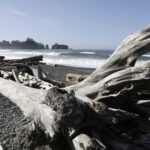
The Gulf of America’s “dead zone” has shrunk significantly this summer, with scientists measuring a hypoxic area of just over 4,400 square miles — roughly a third smaller than last year and far less than the long-term average, federal officials announced Wednesday.
The dead zone, a stretch of oxygen-depleted water that forms annually off the Louisiana and Texas coasts, is caused primarily by excess nutrients washing into the Gulf from the Mississippi-Atchafalaya River Basin.
This year’s zone, measured during a July 20–25 survey aboard the research vessel Pelican, was 4,402 square miles — 21% smaller than NOAA’s early-season estimate and the 15th smallest on record, according to NOAA-supported scientists from LSU and the Louisiana Universities Marine Consortium.
“This year’s significant reduction in the Gulf of America’s ‘dead zone’ is an encouraging sign for the future of this area,” said Laura Grimm, acting NOAA administrator. “It highlights the dedication and impactful work of NOAA-supported scientists and partners, and serves as a testament to the effectiveness of collaborative efforts in supporting our U.S. fishermen, coastal communities, and vital marine ecosystems.”
The measured area is equivalent to roughly 2.8 million acres of bottom habitat temporarily made unavailable to marine life such as fish and shrimp due to low oxygen levels.
That marks a 30% drop from 2024, when the zone spanned a massive 6,703 square miles — more than 1.3 times the long-term average and nearly 3.5 times larger than the target goal of 1,930 square miles set by the Mississippi River/Gulf of Mexico Hypoxia Task Force.
Despite this year’s improvement, the five-year running average remains high at 4,755 square miles—still more than double the federal benchmark.
Click this link for the original source of this article.
Author: Ray Hilbrich
This content is courtesy of, and owned and copyrighted by, https://www.offthepress.com and its author. This content is made available by use of the public RSS feed offered by the host site and is used for educational purposes only. If you are the author or represent the host site and would like this content removed now and in the future, please contact USSANews.com using the email address in the Contact page found in the website menu.





